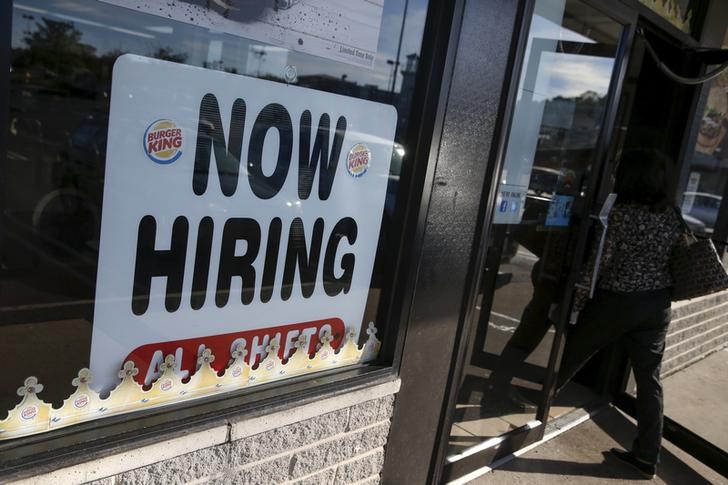By Yasin Ebrahim
Investing.com – Investors had to contend with a duo of softer jobless claims and private payrolls reports, but that hasn’t damped the optimism for Friday's monthly jobs report that economists believe will likely herald a period of a ramp-up in jobs.
The U.S. economy is expected to have created 647,000 jobs last month, well above the prior month's gains of 379,000, underpinned by fiscal stimulus and the economic reopening amid a faster pace of vaccine roll outs.
But others are forecasting a much larger gain closer to seven-figure level, citing big gains in the food services sector and a rebound in construction amid warmer weather.
"We expect a strong 950,000 increase in nonfarm payroll employment during March," Nomura said. "OpenTable data for the March BLS reference week suggest a solid increase in food service employment of around half a million.
"Moreover, construction employment likely rebounded during the month, as warmer temperatures swept across the US following colder-than-usual weather in February," it added.
The unemployment rate is expected to drop to 6% from 6.2%, thanks to an improving labor force participation rate, which had slumped to the largest 12-month decline in labor since at least 1948 during the pandemic.
Still, the unemployment would remain well above pre-pandemic levels, with Federal Reserve President Jerome Powell recently admitted that it was "not at all likely" the U.S. will return to maximum employment this year.
"An increase of one million jobs would be an improvement but still leave us 8.5 million in the hole from the recession. At that pace, it would still take another eight and a half months to recoup what we lost to the recession, let alone what might have been. We had been generating more than two million jobs a year prior to the crisis. The key is not to lose momentum again," Diane Swonke, chief economist at Grant Thornton said.
For the inflation protagonist, meanwhile, wage inflation is likely to disappoint, with forecasting showing a 0.1% compared with 0.2% previously, driven by "the percentage of lower paid workers in the jobs pool, as seen with the 4.7% surge last April and the 1.0% pop in December," Action Economics said.
